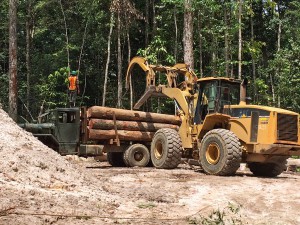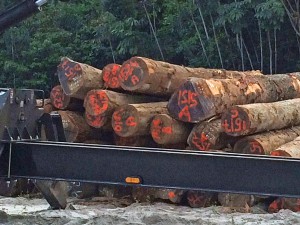The primary aim of the grant is to provide funding to enable the Iwokrama International Centre for Rain Forest Conservation and Development (IIC) to achieve Forest Stewardship Council (FSC) Certification of its sustainable timber harvesting operation and the Iwokrama Forest.
Iwokrama (http://www.iwokrama.org/) is a one of a kind institution that has the ability to demonstrate that environmental conservation, social consciousness and sustainable economic activities can be mutually reinforcing and help reduce the global rate of deforestation by providing models of sustainable forest management using multiple forest resources.
It is a key environmental programme dedicated by the Government of Guyana to the Commonwealth in 1989 at the Commonwealth Heads of Government meeting in Malaysia. Since its foundation, through an Act of Parliament in 1996, Iwokrama has sought to advance best practice in the sustainable management of the world’s remaining rain forests. Iwokrama manages the 371,000 hectare (nearly one million acre) Iwokrama Forest in central Guyana to show how tropical forests can be conserved and sustainably used for ecological, social and economic benefits to local, national and international communities.
The Forest Stewardship Council (FSC) is a global, not-for-profit organization dedicated to the promotion of responsible forest management worldwide. FSC Certification ensures that products come from well managed forests that provide environmental, social and economic benefits.
- Environmentally Appropriate: Protecting and maintaining natural communities and high conservation value forests.
- Socially Beneficial: Respecting the rights of workers, communities and indigenous peoples.
- Economically Viable: building markets, adding best value, and creating equitable access to benefits.
The FSC Principles and Criteria set out best practices for forest management.
FSC Forest Management Certification FSC Chain of Custody Certification
The grant supports
- Institutional Strengthening Institutional Strengthening includes contracting a FSC specialist coordinator who will oversee all of the FSC readiness activities. The grant has also provided a vehicle to support monitoring and training and capacity building. Grant activities also include documenting the sustainable forestry model and sharing of lessons learned with local, regional and international stakeholders that are involved in Sustainable Forest Management.
- Stakeholder Engagement FSC Certification requires significant stakeholder involvement with participants from the private and public sectors, local Non-Governmental Organisations, civil society and the local Amerindian communities.
- Training and Capacity Building FSC Certification requires significant training and capacity building for all personnel, stakeholders and local community members in areas including but not limited to FSC Principles, National Laws and Regulations, Health and Safety training, Training in Reduced Impact Logging and other forest management techniques.
- Compliance with FSC and Other Laws and Guidelines FSC Certification requires a comprehensive and intensive monitoring schedule as the auditors pay annual visits in order to verify compliance. Health and Safety is of paramount importance to FSC operations and so protective gear and safety signage are essential part of FSC compliance. FSC Certification also requires documentary evidence of good forest management, therefore forest management plans, site management plans, environmental permits and reports have to be constantly updated. Post-harvest inventories are also an important activity to show change in forest dynamics including meeting sustainability parameters and tracking wildlife movement post timber harvesting activities.
See more photos on

The Farfan & Mendes Group (FML) commenced logging operations in the Iwokrama rainforest in mid-2015. Sawmilling operations are going to commence soon. FML, who cuts timber for quality, which yields better prices, is going to seek FSC ‘Chain of Custody’ certification. Chain of Custody certification applies to manufacturers, processors and traders of FSC certified forest products. It verifies FSC certified material and products along the production chain.

FML is using a wheel loader to load in the forest now. In future, they will use the knuckleboom as the wheel loader is more dangerous and digs up the floor of the log market. It also requires more space and therefore forest clearance. Because FML cut to length in the forest, they need much smaller log markets, i.e. 25 x 25 meters versus larger when loading tree length logs with a wheel loader. Many times, traditional methods require 100 x 100 meter loading areas.

This loader will be moved to load trucks in the forest and crosscut logs to sawmill lengths in the forest with an attached ground saw.

From the GFC tag number, FML can find management unit no, block no, and Iwokrama tree number. Pieces are marked A, B, C etc. if they are cut from the same log. Pieces are marked at both ends with spray paint to give the best chance at clarity of the markings.